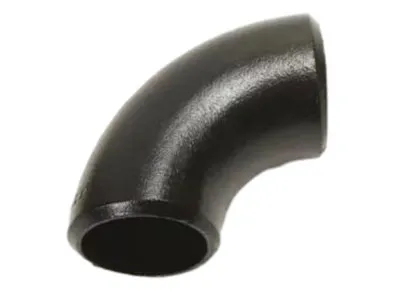-
Cangzhou Yulong Steel Co., Ltd.
-
Phone:
+86 13303177267 -
Email:
admin@ylsteelfittings.com
- English
- Arabic
- Italian
- Spanish
- Portuguese
- German
- kazakh
- Persian
- Greek
- French
- Russian
- Polish
- Thai
- Indonesian
- Vietnamese
- Zulu
- Korean
- Uzbek
- Hindi
- Serbian
- Malay
- Ukrainian
- Gujarati
- Haitian Creole
- hausa
- hawaiian
- Hebrew
- Miao
- Hungarian
- Icelandic
- igbo
- irish
- Japanese
- Javanese
- Kannada
- Khmer
- Rwandese
- Afrikaans
- Albanian
- Amharic
- Armenian
- Azerbaijani
- Basque
- Belarusian
- Bengali
- Bosnian
- Bulgarian
- Catalan
- Cebuano
- China
- China (Taiwan)
- Corsican
- Croatian
- Czech
- Danish
- Esperanto
- Estonian
- Finnish
- Frisian
- Galician
- Georgian
- Kurdish
- Kyrgyz
- Lao
- Latin
- Latvian
- Lithuanian
- Luxembourgish
- Macedonian
- Malgashi
- Malayalam
- Maltese
- Maori
- Marathi
- Mongolian
- Myanmar
- Nepali
- Norwegian
- Norwegian
- Occitan
- Pashto
- Dutch
- Punjabi
- Romanian
- Samoan
- Scottish Gaelic
- Sesotho
- Shona
- Sindhi
- Sinhala
- Slovak
- Slovenian
- Somali
- Sundanese
- Swahili
- Swedish
- Tagalog
- Tajik
- Tamil
- Tatar
- Telugu
- Turkish
- Turkmen
- Urdu
- Uighur
- Welsh
- Bantu
- Yiddish
- Yoruba

Oct . 05, 2024 09:39 Back to list
A Beginner's Guide to Pipe Welding Techniques and Best Practices
Pipe Welding for Beginners A Comprehensive Guide
Pipe welding is an essential skill in various industries, including construction, manufacturing, and energy. Whether you're interested in pursuing a career in welding or simply want to learn a new hobby, understanding the basics of pipe welding is crucial. This article aims to guide beginners through the fundamental concepts and techniques involved in pipe welding.
Understanding Pipe Welding
Pipe welding involves the process of joining two pieces of metal piping together through the application of heat. The goal is to create a strong, durable bond that can withstand high levels of pressure and temperature. Common methods include Shielded Metal Arc Welding (SMAW), Gas Tungsten Arc Welding (GTAW or TIG), and Gas Metal Arc Welding (GMAW or MIG). Each method has its own advantages and is suited for different types of materials and applications.
Safety First
Safety is paramount in welding. Beginners should always wear appropriate protective gear, including a welding helmet with the correct shade, gloves, and fire-resistant clothing. It is also important to work in a well-ventilated area to avoid inhaling harmful fumes. Familiarizing oneself with the safety data sheets for the materials being used can further enhance safety awareness.
Equipment and Materials
Before starting, it’s essential to gather the necessary equipment. The welding machine, electrodes, filler rods, and the specific type of pipe to be welded must be selected based on the project requirements. Mild steel is typically the most common material for beginners due to its accessibility and ease of welding.
pipe welding for beginners

Preparation
Proper preparation of the materials is a critical step in the welding process. This includes cleaning the pipe surfaces to remove any rust, paint, or debris that may affect the quality of the weld. The edges of the pipes should also be beveled, ensuring a better fit and stronger weld.
Welding Techniques
Beginners should practice basic welding techniques, starting with the vertical and horizontal positions. The key is to maintain a steady hand and consistent speed while moving the electrode or welding torch along the joint. Mastering the right travel angle and speed will significantly impact the quality of the weld.
Post-Welding Inspection
Once the welding is complete, it's vital to inspect the weld for any flaws or weaknesses. Visual inspection is important, but additional testing methods, such as ultrasonic testing or radiographic inspection, may be used for critical applications.
Conclusion
Pipe welding can be a rewarding skill, but it requires patience, practice, and a focus on safety. By understanding the fundamental techniques and continually honing your skills, you can become proficient in pipe welding. As you advance, consider seeking out more complex projects to further develop your expertise. Happy welding!
Latest news
-
ANSI 150P SS304 SO FLANGE
NewsFeb.14,2025
-
ASTM A333GR6 STEEL PIPE
NewsJan.20,2025
-
ANSI B16.5 WELDING NECK FLANGE
NewsJan.15,2026
-
ANSI B16.5 SLIP-ON FLANGE
NewsApr.19,2024
-
SABS 1123 FLANGE
NewsJan.15,2025
-
DIN86044 PLATE FLANGE
NewsApr.19,2024
-
DIN2527 BLIND FLANGE
NewsApr.12,2024
-
JIS B2311 Butt-Welding Fittings LR/SR 45°/90° /180°Seamless/Weld
NewsApr.23,2024











